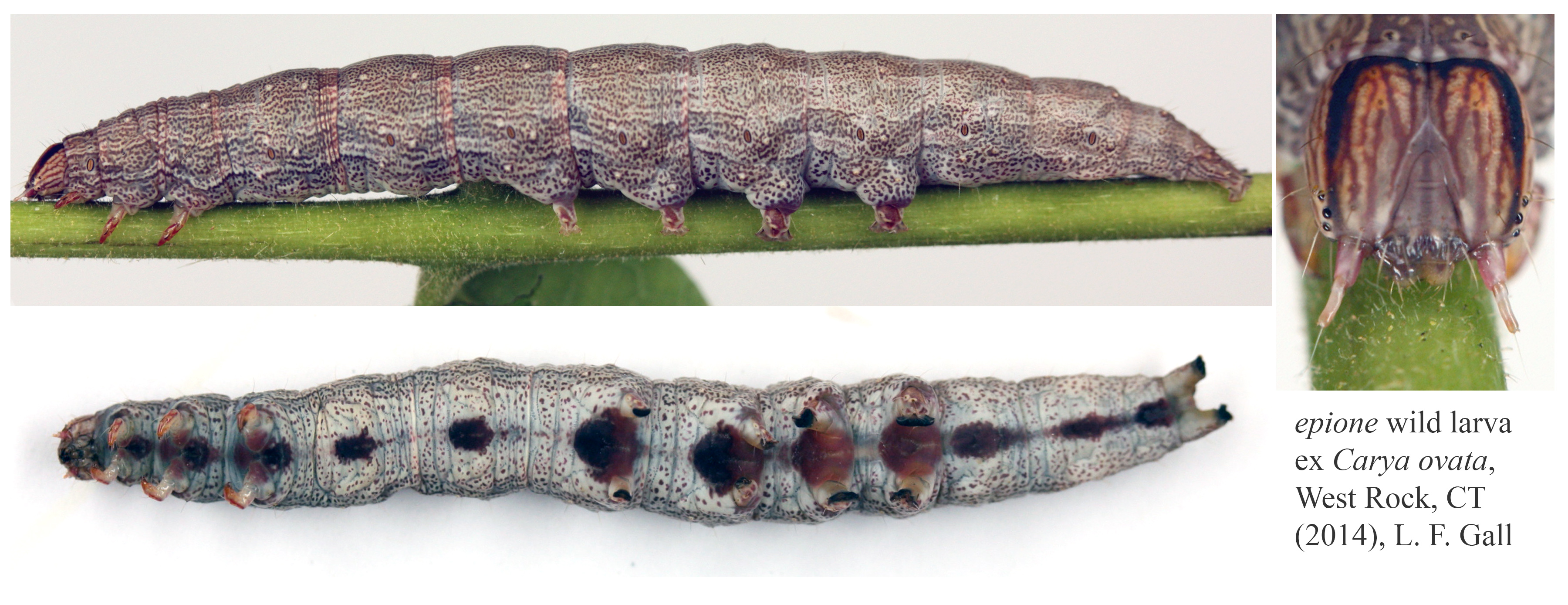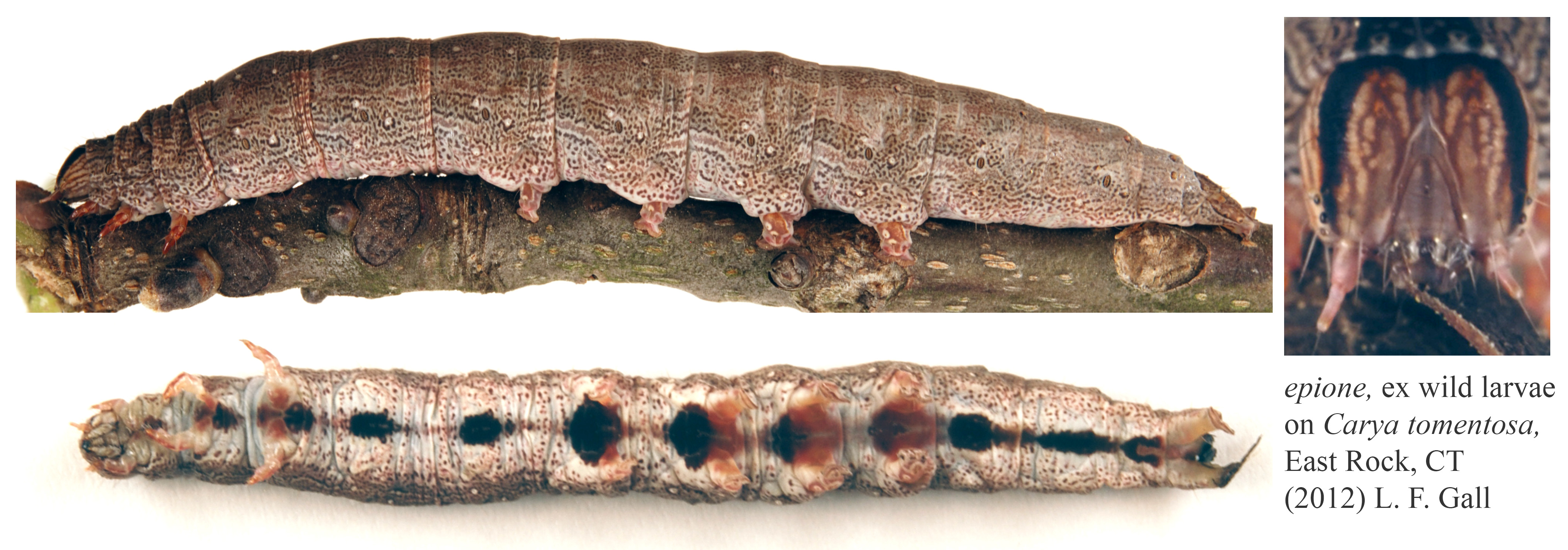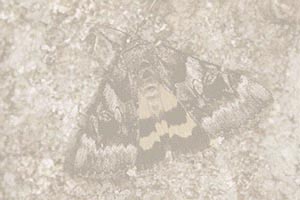 Catocala epione
Catocala epione
(Drury, 1773)
The larvae of both
consors and
epione are
quite similar and overlap in pattern, but can be
separated readily from all other Juglandaceae-feeding Catocala on morphology, except
for the occasional lightly marked
piatrix (whose foodplants
are essentially non-overlapping).
Larvae of consors and epione are light to medium gray in ground color, with
stippled obscure lines, no A5 saddle patch, no A5/A8 protuberance, no lateral
filaments, small
white dorsal and dorsolateral pinnacula, tapered smooth body; head capsule with wide and crisply
margined black lateral bands extending and connecting across top, reddish gray lobes and frons and side striping;
venter ground color off-white, numerous small
dark stipples throughout, black spots on
segments typically elongated above/below A3-A6.
Preserved specimens of mature
consors
at Yale Peabody Museum have either a thin black central line
connecting all ventral spots (n=1), or just A1-A5 (n=1), or no line (n=3); none of the
epione
(n=44) have lines. Both species are fond of sandy/scrubby habitats, although
epione also occurs in wooded areas. Foodplants include various non-pecan (Carya [Eucarya])
hickories; in quantitative sampling epione was found commonly on each of Carya ovata,
Carya glabra and Carya tomentosa and overwhelmingly on small trees
(Gall, 1991).


|


